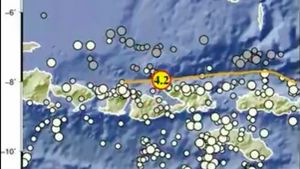JAKARTA - Born on June 11, 1867 in Marseille, France, a physicist named Charles Fabry worked with other French scientists to develop the multibeam interference theory and discover the ozone layer. Fabry graduated from the University of Paris in 1892 and joined the staff of the University of Marseilles in 1894.
Not only himself. His brothers were also scientists, namely Eugène, a mathematician and Louis, an astronomer. Both graduated from the École Plytechnique in Paris.
Launching Britannica, Thursday, June 11, Fabry quickly revolutionized the field of optics and spectroscopy by developing the Fabry-Pérot interferometer, his scientific project with Alfred Pérot. The duo based the interferometer, or elaton, on Fabry's theory of multibeam interference.
This version of the device is still used today in high definition spectroscopy. The Fabry-Pérot interferometer is based on multiple reflections of light between two semi-parallel mirrors on a plane.
The distribution of light produced by an interference beam which has undergone a different number of reflections is characterized by very well defined maxima and minima, as well as monochromatic light which produces a sharp concentric set of rings. The different wavelengths in the incident light can be distinguished by the resulting set of rings.
This instrument produces a sharper edge than that designed by the American scientist Albert Michelson. Fabry and Pèrot have continued to work together for about a decade as they apply their interferometer to spectroscopy and metrology.
Fabry's early studies centered on the disturbance of light, whose main research instrument was the Fabry-Pérot interferometer, which was discovered in 1896 as a result of his scientific project with Alfred Pérot. This instrument is widely used for the measurement of the wavelength of light and related studies.
Fabry's interest in astronomy grew when observing his fellow students. That interest led him to use an interferometer to study the spectra of the sun and stars, and to improve photometric techniques to measure the brightness of the night sky.
Meanwhile, while applying it to studying the spectrum of sunlight and the stars, Fabry discovered that the sun's ultraviolet radiation was filtered out by the ozone layer. The ozone layer acts as a layer that protects life on the earth's surface from the harmful effects of ultraviolet radiation.
In 1921 Fabry took up a professorship at the Sorbonne in Paris and became the first director of the city's Institute of Optics. Some of Fabry's awards include the Rumford Medal from the Royal Society in London in 1918, the Franklin Medal in the US in 1921 and the honorary designation for the Optical Society in 1933. Fabry is a prolific writer, writing popular non-scientific articles so that ordinary people can understand his work.
Late in his life, Fabry helped French scientists in World War II. Poor health near the end of the war forced him to return to Paris, where he died at the age of 78 in 1945.
The English, Chinese, Japanese, Arabic, and French versions are automatically generated by the AI. So there may still be inaccuracies in translating, please always see Indonesian as our main language. (system supported by DigitalSiber.id)












